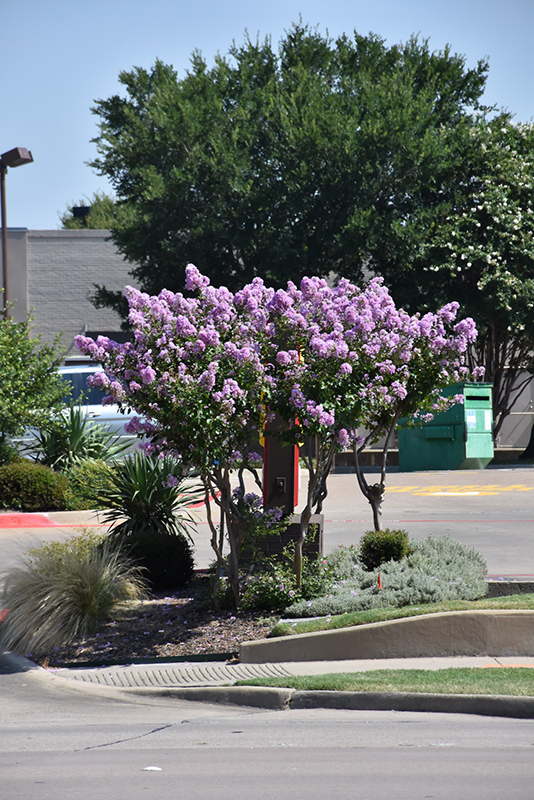>> Home
Tropical Purple Crapemyrtle
Lagerstroemia speciosa 'Tropical Purple'
Height: 25 feet
Spread: 10 feet
Sunlight:
![]()
![]()
Hardiness Zone: 9
Other Names: Crape Myrtle, Crepe Myrtle
Brand: Greenleaf Nursery
Description:
This stunning, multi-stemmed large shrub or small tree, produces volumes of lavender-purple frilly blooms in summer; attractive green foliage turns vibrant red in fall; excellent as a landscape specimen
Ornamental Features
Tropical Purple Crapemyrtle is blanketed in stunning panicles of purple frilly flowers with lavender overtones at the ends of the branches from mid to late summer. It has green deciduous foliage. The glossy oval leaves turn red in fall.
Landscape Attributes
Tropical Purple Crapemyrtle is a dense multi-stemmed deciduous tree with an upright spreading habit of growth. Its relatively fine texture sets it apart from other landscape plants with less refined foliage.
This tree will require occasional maintenance and upkeep. Trim off the flower heads after they fade and die to encourage more blooms late into the season. It has no significant negative characteristics.
Tropical Purple Crapemyrtle is recommended for the following landscape applications;
- Mass Planting
- Hedges/Screening
- General Garden Use
Planting & Growing
Tropical Purple Crapemyrtle will grow to be about 25 feet tall at maturity, with a spread of 10 feet. It has a low canopy with a typical clearance of 3 feet from the ground, and is suitable for planting under power lines. It grows at a fast rate, and under ideal conditions can be expected to live for approximately 30 years.
This tree does best in full sun to partial shade. It prefers to grow in average to moist conditions, and shouldn't be allowed to dry out. It may require supplemental watering during periods of drought or extended heat. It is very fussy about its soil conditions and must have rich, acidic soils to ensure success, and is subject to chlorosis (yellowing) of the foliage in alkaline soils. It is highly tolerant of urban pollution and will even thrive in inner city environments. This is a selected variety of a species not originally from North America.
